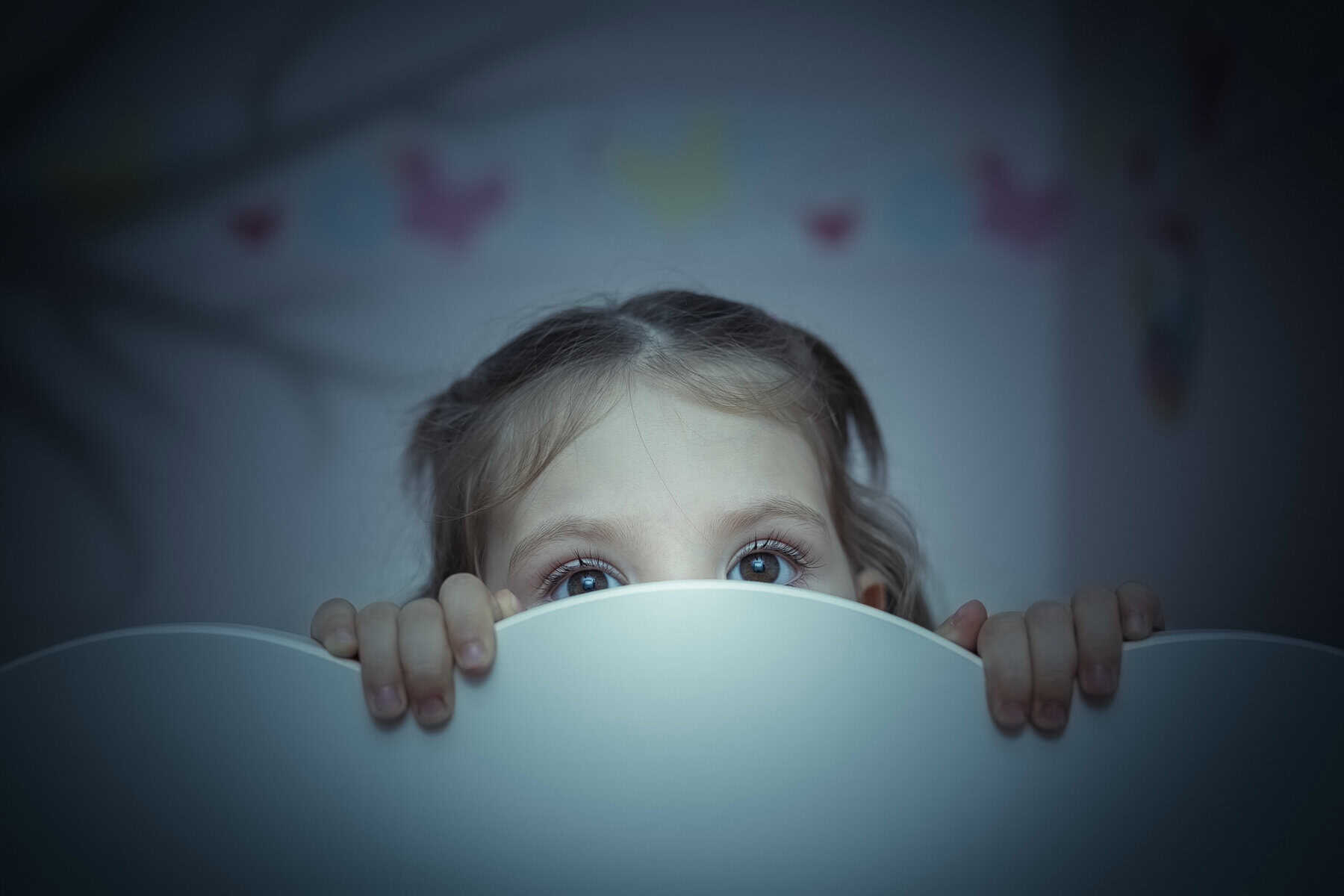
little girl is afraid of shadow of tree
It can be as scary as having a horror movie play out in your home. Yet, there’s no shadowy figure with a pickaxe to justify the screams, cold sweat and fear. Night terrors are frightening for children and for parents of young kids; they can be very disturbing.
By morning, all’s gone and forgotten. Because, despite its awful nature, these experiences are nothing more than a sleep disturbance, said psychologist and medical doctor Dr Jonathan Redelinghuys.
Night terrors tend to happen in the first few hours of sleep, during deep non-REM or rapid eye movement sleep. Research has suggested that up to7% of children between the ages of one and twelve go through this ordeal. Thankfully, noted Dr Redelinghuys, children usually outgrow this life stage naturally.
Like a horror movie at home
When it happens, though, especially for the first time, it’s better to understand what’s really happening. “It’s very important for parents to understand that the child is not awake,” said Dr Redelinghuys. “They look conscious, but they are stuck between sleep stages and the brain’s fight-or-flight response is over-activated. The child is not aware of what is happening and is not in psychological distress, even though it looks frightening.”
When a night terror happens, said Dr Redelinghuys, “do not shake or try to wake the child. Make sure they cannot fall or walk into anything. Let it run its course. When it ends, guide them back to bed. And in the morning, leave it alone. The child does not remember it and does not need a dramatic recap.”
Parents, said Dr Redelinghuys, can confuse night terrors with nightmares, but there is a difference and being aware of this can help figure out how to respond to the incident. “Nightmares happen later in the night during REM sleep,” he said. “The child wakes fully, remembers the dream and wants comfort. Night terrors happen earlier, during deep sleep, and waking the child is extremely difficult. Attempts to do so usually prolong the episode.” He added that the best thing a parent can do is stay calm during terror episodes and ensure the child is safe until the episode passes.
Staying calm
There is rarely a clear cause for night terrors. “Overtiredness, disrupted routines, fever, a full bladder, and illness can all trigger terrors,” said Dr Redelinghuys. “A family history of parasomnias like sleepwalking also raises the likelihood of occurrence, and emotional overload during the day plays a role too. Anxiety, school pressure, family tension, screen stimulation or big emotional events can keep a child’s nervous system fired up long after lights-out.”
Also Read: How to wean your baby off breastfeeding without the tears
“A night terror is often the smoke, not the fire,” Dr Redelinghuys said. “Look at what is happening in the child’s life. That’s where parents should pay attention.” That’s because prevention can depend on reducing the triggers and ensuring a stable routine. “A consistent bedtime, enough sleep, predictable slowdowns at the end of the day, reduced stimulation before bed and avoiding screens at night all help.”
If the terrors happen at the same time every night, some research suggested waking the child briefly, fifteen to thirty minutes before the usual onset, and letting them fall asleep again to try and interrupt the cycle. Factors like snoring, breathing pauses, or persistent illness can also cause night terrors.
Look out for tell-tale signs
There is a risk that terrors could spark anxiety before lights out if a child recalls the incidents. “It helps to talk about bedtime feelings during the day, in a relaxed moment,” Dr Redelinghuys said. “Something as simple as ‘It must feel scary when that happens, but you are safe, and we are here’ can help take the bite out of a frightening event.” However, he cautioned that if the episodes become too frequent, violent, or lead to daytime sleepiness, professional assessment is recommended.



